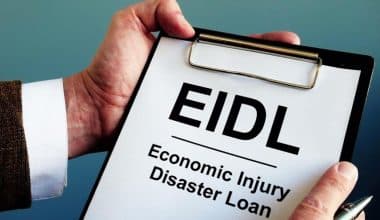The US Department of Housing and Urban Development (HUD) Community Development Block Grants program(CDBG) is a long-standing program that provides flexible federal funding to states and local administration to support economic development, community development and Infrastructure.
The program assists urban, suburban and rural communities to improve housing and living conditions and expand economic opportunities for low- and moderate-income persons. CDBG helps create jobs through the expansion and retention of businesses and is an important tool for helping local governments tackle serious challenges facing our communities.
Counties use the flexibility of CDBG funds to partner with the private and non-profit sectors to develop and upgrade local housing, water, infrastructure, and human services programs. Counties rely on the flexibility of CDBG funds to meet each community’s particular development needs. Just take your time and go through this article, you will get every detail you need to be a participant in the COMMUNITY DEVELOPMENT BLOCK GRANT.
Who Can Apply for Community Development Block Grant?
Eligibility for participation as an entitlement community is based on population data provided by the U.S. Census Bureau and metropolitan area delineations published by the Office of Management and Budget.
HUD determines the amount of each entitlement grantee’s annual funding allocation by a statutory dual formula that uses several objective measures of community needs, including the extent of poverty, population, housing overcrowding, age of housing and population growth lag in relationship to other metropolitan areas.
About 70% of CDBG program funds are distributed to eligible communities, defined as metropolitan cities, cities with a population of about 50,000 and urban counties of 200,000 inhabitants or more (excluding eligible city populations).
The remaining 30% of funds are allocated to states on the basis of a formula allocation process. State CDBG funds are distributed by states to communities that do not qualify for entitlement funds. Before allocations are made to states and localities, $ 7 million is statutorily set aside for distribution among the American territories.
What can CDBG Funds be Used for?
CDBG funds can be used for activities that include, but are not limited to:
- Acquisition of real property
- Relocation and demolition
- Rehabilitation of residential and non-residential structures
- Construction of public facilities and improvements, such as water and sewer facilities, streets, neighborhood centers, and the conversion of school buildings for eligible purposes
- Public services, within certain limits
- Activities relating to energy conservation and renewable energy resources
- Provision of assistance to profit-motivated businesses to carry out economic development and job creation/retention activities
Each activity must meet one of the following national objectives for the program: benefit low- and moderate-income persons, prevention or elimination of slums or blight, or address community development needs having a particular urgency because existing conditions pose a serious and immediate threat to the health or welfare of the community for which other funding is not available.
Community Development Block Grant Eligibility
Each application must meet one of the following National Objectives:
Low and Moderate Area Benefit: The project meets the identified needs of L/M income persons residing in an area where at least 51% of those residents are L/M income persons.
Low and moderate limited clientele: Such a project have to benefits a specific group of people (rather than all residents of a designated area), at least 51% of whom are low and moderate-income persons. The following groups are presumed to be abused children, elderly persons, battered spouses, homeless, handicapped, and illiterate persons.
Low and moderate housing: the project adds or improves permanent residential housing structures occupied by low-income households upon completion. Housing can be either rental or owner-occupied units in either single or multi-family buildings.
Low and moderate Jobs: the project creates or retains permanent jobs, at least 51% of which are taken by the target income persons or considered available to them.
Micro-Enterprise Assistance: the project assists in establishing a micro-enterprise or assisting persons developing a micro-enterprise.
Community Development Block Grant Assessment Criteria
The application process for the CDBG is highly competitive. So, to ensure that your proposal scales through the assessment stage, the project must:
- Promote the objectives of CDBG
- Have a significant impact
- Encourage the inclusion of marginalized and vulnerable groups
- Enhance gender equality
- Have strong prospects for successful implementation
- Your organization must have a strong track record
- Be technically sound in conception and presentation
- Represent good value for money
- Have strong prospects of sustainability beyond the project duration.
Community Development Block Grant Ineligible Activities
Below are activities that are not eligible for CDBG:
- Neither benefit low and moderate-income persons nor address slums or blight
- General government expenses, including operation and maintenance. Political activities.
- Rental assistance or other direct income payments to individuals.
Community Development Block Grant for Individuals
To be eligible, the applicant must meet all the following criteria:
- Provide citizens with reasonable and timely access to local meetings, information, and records related to the actual use of funds
- Enhace public hearings to obtain citizen views and to respond to proposals and questions of the community development program
- Provide for timely written answers to written complaints and grievances
What are Types of Grants Available?
The major types of grants available are as follow:
- Categorical Grants
- Block Grants
- Project grants
- Formula grants
- Formula grants
Categorical grants provide programs and include requirements. Highway programs and education grants fall under categorical grants
Block grants provide funding for eligible activities identified in authorizing legislation. Community development, education, health service and crime controls are some examples of Block grants.
Project grants These are similar to categorical grants and fund specific projects and services.
Formula grants are allocated based on a decision rule, such as x dollars per public school pupil. The purpose is to allocate funding based on quantifiable variables.
Matching grants require that the recipient contribute something towards the project costs.
What are Block Grants?
Block grants are the result of the United States federal system. In a federal system, the federal government is in charge of certain government functions (eg, national defence), and local and state governments are in charge of other government functions (eg, education). But the federal government often tries to influence state and local governments by giving grants in return for meeting their demands.
What is an Example of a Block Grant?
The most common examples of block grants are:
- The Mental Health Block Grant (MHBG)
- Social Services Block Grant Program (SSBG)
- Community Development Block Grant
The Mental Health Block Grant (MHBG):
The Mental Health Block Grant, established in 1981, has provided millions of dollars to states to help treat mental illnesses.
The Social Services Block Grant Program (SSBG) is a broad-based program that allows states and territories to tailor social service programs to the needs of their populations. Administered by Health and Social Services, the program aims to “reduce dependency and promote self-sufficiency; protect children and adults from neglect, abuse and exploitation; and helping people unable to take care of themselves stay at home or find the best institutional arrangements.
Community Development Block Grant:
The CDBG program, administered by the Agency for Housing and Urban Development, is generally defined as work aimed at ensuring decent and affordable housing, providing services to the most vulnerable in our communities, and creating jobs through l expansion and retention of businesses.
Who Can Get a Federal Grant?
Most grants are awarded to:
- Non-profits like charities, schools and community organizations
- State & local government agencies
- Federally-recognized tribes
- Public safety agencies like hospitals, police and fire departments
Conclusion
The CDBG program provides annual grants on a formula basis to over 1,200 metropolitan city and county governments and to state governments. About 214 counties receive grants directly. These “entitlement” cities and counties receive 70 percent of CDBG funds, while states receive 30 percent. “Non-entitlement” communities, such as rural counties, must compete for funding via the state formula allocation.






